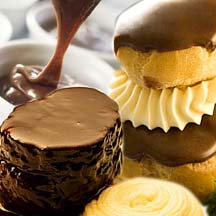Running - and Writing - in a Circle
by LuAnn Schindler
There are days when a situation presents itself and we feel overwhelmed, unsure of what direction to take. We're running in a circle to accomplish the daily to-do list or running around trying to focus on too many things at once.
It's the same way with writing. Sometimes, the words on the page seem like they are in a circular motion, trying to form a connection that simply doesn't exist.
A good exercise I like to use to get the total connection is in the book The Write-Brain Workbook: 366 Exercises to Liberate Your Writing by Bonnie Neubauer. It's called the Circle Game.
Write these three lists of words on a piece of paper:
Alabama Banister Carousel Diesel Exorcist
Flatulence Garage Harried Insensitive Jambalaya
Keepsake Lamb Massage Nonsense Oriole
Now, circle one word in each line.
The next step is to create a story incorporating these words. The first line of your work will be:
Sometimes I feel just like a gerbil, running around and around on his wheel.
When you're writing, it's important to make the connection. Circular writing and thinking ties the elements together, allowing readers to follow the path the writer is traveling.
Circular thinking is a good thing, a positive step in linking words, items, people, places together. Use the running around exercise to expand your circle of knowledge.
Exercise reprinted from The Write-Brain Exercise: 366 Exercises to Liberate Your Writing by Bonnie Neubauer. Copyright 2006.
There are days when a situation presents itself and we feel overwhelmed, unsure of what direction to take. We're running in a circle to accomplish the daily to-do list or running around trying to focus on too many things at once.
It's the same way with writing. Sometimes, the words on the page seem like they are in a circular motion, trying to form a connection that simply doesn't exist.
A good exercise I like to use to get the total connection is in the book The Write-Brain Workbook: 366 Exercises to Liberate Your Writing by Bonnie Neubauer. It's called the Circle Game.
Write these three lists of words on a piece of paper:
Alabama Banister Carousel Diesel Exorcist
Flatulence Garage Harried Insensitive Jambalaya
Keepsake Lamb Massage Nonsense Oriole
Now, circle one word in each line.
The next step is to create a story incorporating these words. The first line of your work will be:
Sometimes I feel just like a gerbil, running around and around on his wheel.
When you're writing, it's important to make the connection. Circular writing and thinking ties the elements together, allowing readers to follow the path the writer is traveling.
Circular thinking is a good thing, a positive step in linking words, items, people, places together. Use the running around exercise to expand your circle of knowledge.
Exercise reprinted from The Write-Brain Exercise: 366 Exercises to Liberate Your Writing by Bonnie Neubauer. Copyright 2006.
Labels: circular thinking, LuAnn Schindler, writing prompt












